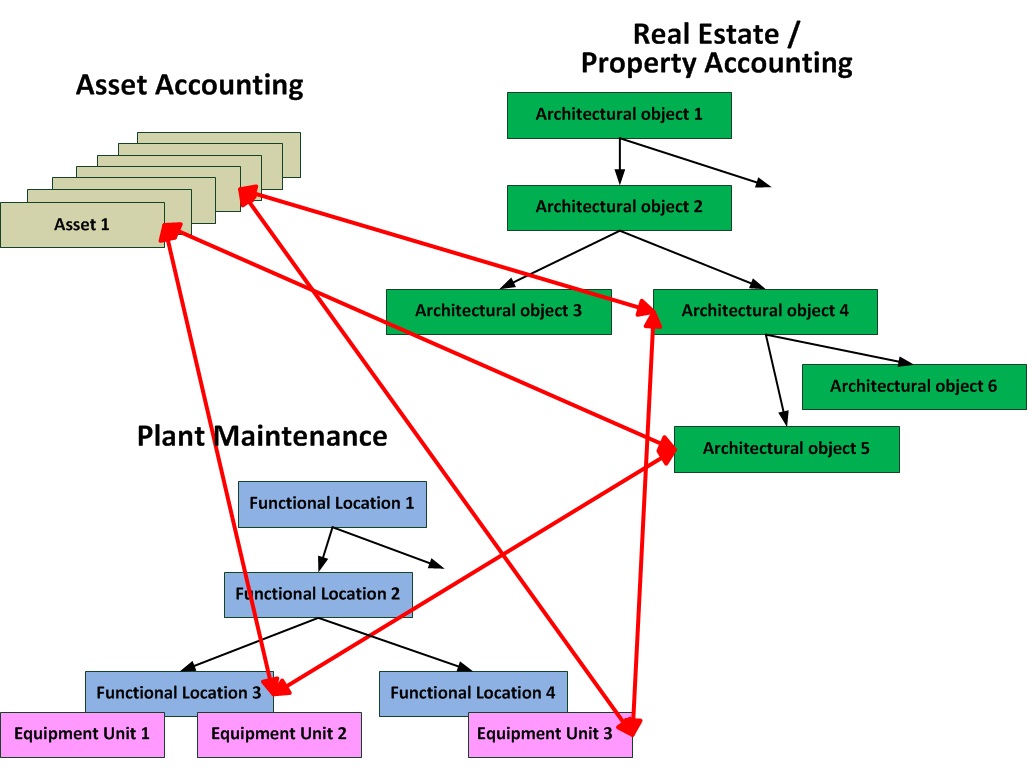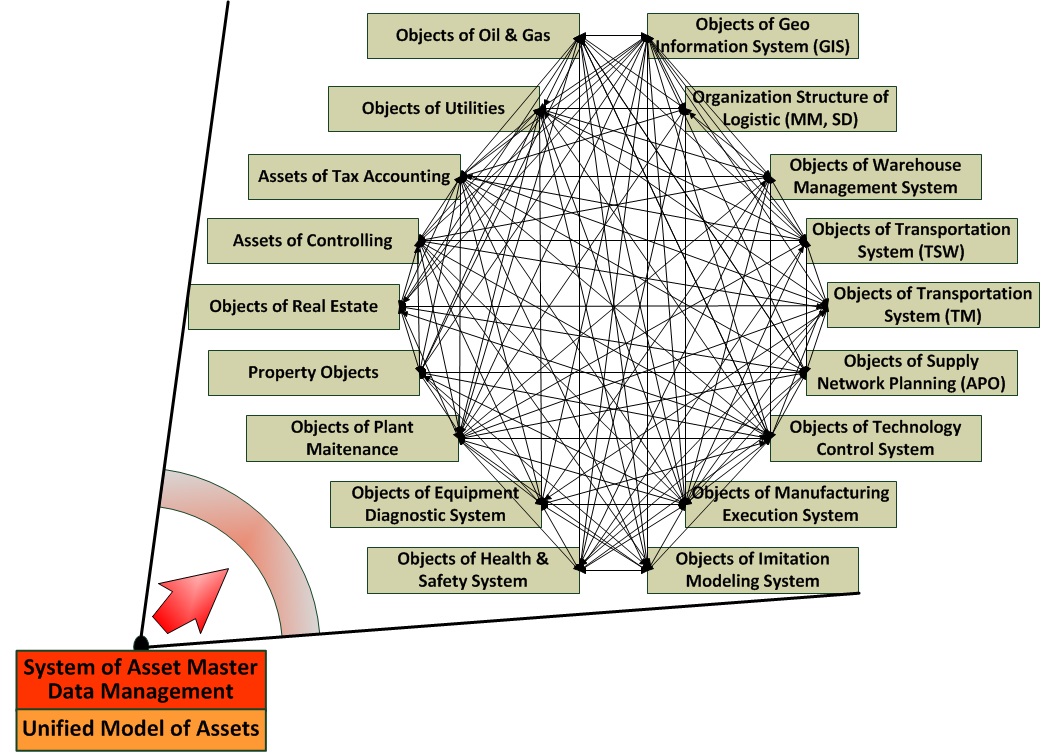In various modules of the existing management systems, asset master data of the same physical object (usually presenting various characteristics) is conducted independently from module to module. Even when modules are part of the same ERP system, the same approach to master data is observed. Conventional structure of asset data within modern ERP systems is shown on the picture below.

From the technical point of view it is done in the following way: subsystems utilize proprietary data structures of various complexities and independent object classifiers to gather master data on assets. Master Data is conducted independently from module to module even though the list of objects and their descriptions are needed for several applications. As a consequence, a duplication and incompatibility of data occurs. Besides the degradation in data quality, it also leads to the complexity in support.
In reality, corporate systems have many more subsystems than presented on the picture that use master data on assets. Examples of such data:
- Assets as objects of the accounting and tax accounting;
- Real estate objects;
- Objects of maintenance servicing and equipment repair;
- Property objects (legal aspect);
- Objects of various monitoring subsystems,
- Objects of control subsystems by an operating modes of process industries, transport and communication, municipal services;
- Objects of various manufacturing execution systems and technological control systems;
- Objects of geo information systems (visualized on maps);
- Generation, transfer and consumption objects in electric energy production and consumption control subsystems;
- Objects of exploration, transportation and distribution of oil, oil products and gas in management subsystems of hydrocarbons exploration, transportation and distribution;
- Processing centers and transport mechanisms in CAM systems;
- Warehouses, distribution centers and shops in retail networks management systems.
MDM systems of Assets did not find wide adoption as did MDM systems of clients, suppliers, products, employees and other business objects types. It is caused by the complexity of forming a unified model of assets that combines various asset views.
Current MDM systems of Assets collect amortization parameters and digital representations(schemas, drawings, pictures), but do not support:
- Various principles of the asset separation used in different applications. It is caused by various principles of the asset separation used in different applications. For example, for accounting purposes, a number of the equipment units standing side by side and having identical amortization methods could be declared as one asset. For repair and maintenance purposes, objects with a different order of repair and service are identified. For property accounting purposes, objects that can be independently sold or leased, for example one fiber in a bunch of optical fibers or a fiber-optical cable, are identified.
- Various hierarchical structures for presenting the same set of assets for different applications. The hierarchies of an inclusion are diverse for different applications that work with assets, and differ in both objects of grouping levels, and objects of the bottom levels of such detailed hierarchies.
- Links between objects that represent the same physical object in various contexts. In complex management systems, it is necessary for users to see various representations of the same asset. For example, from technological view, it is necessary to see objects of maintenance service and repair. From the view of maintenance service and repair, it is necessary to see accounting assets towards which costs will be deducted. From the accounting assets perspective, it is necessary to see corresponding objects of property etc. Almost always it is necessary for users to see objects of several different views. Absence of biunique conformity between bottom level objects of various applications leads to occurrence of many-to-many types of links between the objects of different representations describing the same asset. As was shown earlier, one main object can correspond to several objects of technical accounting. But also contrary is true: one object of technical accounting, for example, the asphalted road, can correspond to set of the assets in the accounting module if its separate sections, which are not units of the technical accounting, were constructed / purchased at the different prices or at various times.
To successfully maintain master data of Assets, we offer a specialized system of Asset MDM that allows combining various representations of the assets that were retrieved in various ways into one unified model.

With the introduction of our system, all problems associated with the necessity to maintain various representations of the same assets are eliminated. Existing applications that rely on asset master data will now retrieve it from one source – our MDM of Assets.